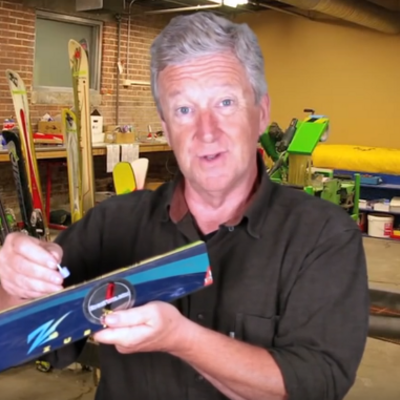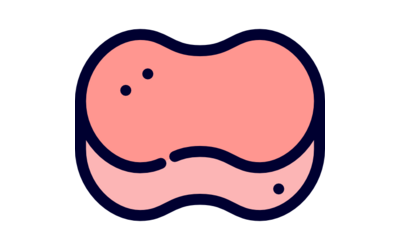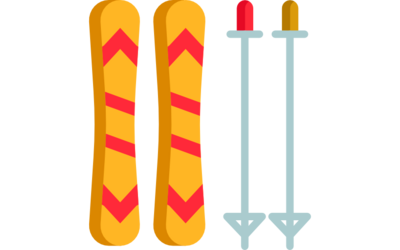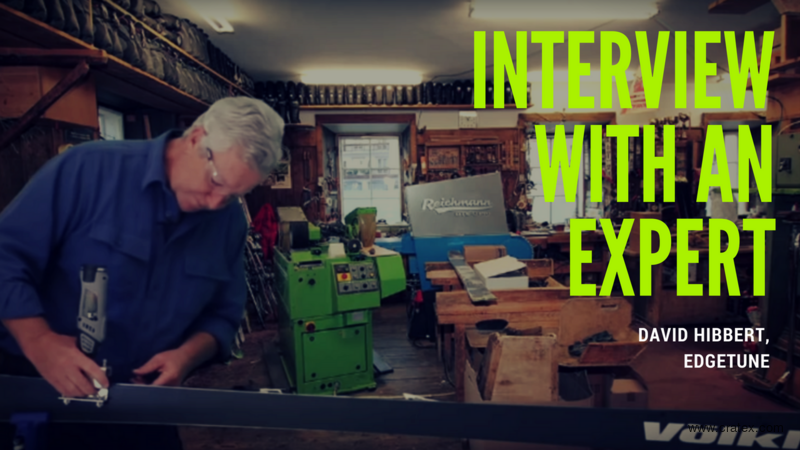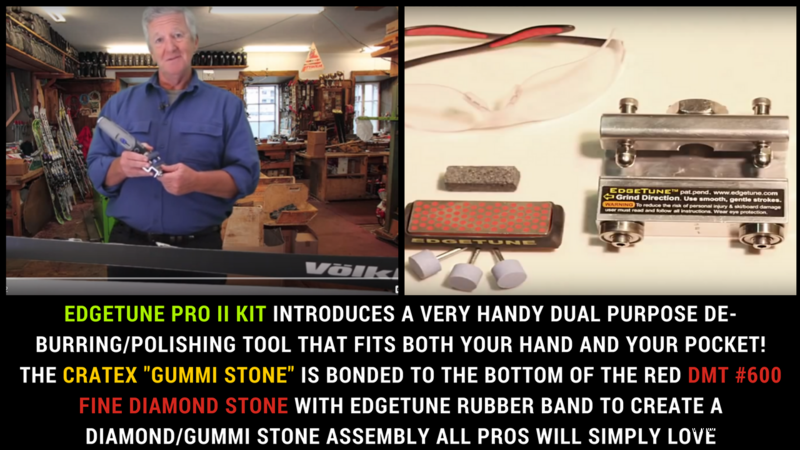Ski or snowboard base and edges must be in perfect condition if you want to enjoy slopes, no matter if you are the beginner or a pro rider. Flat base and sharp edges allow you to ride your gear in the way it is designed. Small rocks, dirt, salted snow, park ride, rails, boxes or oxidation can damage your base and edges easily, meaning that you’ll need to tune your skis or board every season.
If you have just bought a new pair of skis, you don’t need to tune them since all manufacturers deliver their gear sharp and smooth. In this situation, you can probably slightly de-tune edges and make them less grabby, but that’s up to you and it depends on your riding style.
What is Ski Tuning?
It is a process of removing small burst and rust from skis and repairing scratches on the base. Basic ski tuning includes:
- Edge sharpening,
- Base repair (P-Tex works),
- Waxing.
Light base repair and edge sharpening can be done at home, manually by hand, but if your gear has a lot of damage, better leave the repair to the ski repair shop. It will cost you a few bucks, but they have professional equipment like tuning machines that can sharpen your edges quickly (with recommended bevel angle) and bring them into the perfect shape.
Ski Tuning Equipment & Supply
If you decide to repair base and sharpen edges on your own, these are the tools that you'll need for basic ski tune in your garage. Most of them are inexpensive and in case you get them all, you'll have a decent DIY ski tuning kit:
- Ski vise - two chairs or several books can do the trick, but vises will secure skis, so that you can work comfortably. If you're looking to buy new vises, look for those that are wide enough to accommodate new ski models, especially wide ones. Some brands worth mentioning are Wintersteiger, Toko, Tools4Boards, Swix, Ski man, etc. If you decide to buy any of these, be prepared to spend around $80 or more;
- Cleaning towels and alcohol;
- Diamond stones in different grits, usually coarse and fine grit. These are perfect for deburring and polishing edges. Many skiers buy “all-rounder” medium 400 grit stone. Stones will cost you around $17 per piece. Swix, DMT, Diaface MoonFlex are all trusted brands;
- Gummy stone – softer than diamond stone, perfect for de-tuning and polishing in final stages. They can remove rust and light burrs. Always have them in your pocket, especially if you ride in the park. Recommended is CRATEX Brightboy durable gummi stone that found its place in many professional ski tuning kits, like EdgePro;
- Plastic scraper for removing wax after waxing up skis. You are going to use them a lot, and they cost around $10 depending on how wide they are;
- Metal scraper for removing excessive P-Tex. It costs between $6 and $10;
- P-Tex - Base of your snowboard or skis is made of P-Tex. If you need to fill in bigger scratches on the base of a board or a ski, just melt P-Tex candle (stick) and let it leak into the scratches. Remove extra material and level up the base with a metal scraper. There are black and clear P-Tex. Pair of P-Tex sticks cost around $5 on Amazon;
- Tuning file and file guides for sharpening and setting edge bevel. Use them with caution since the file can take off a lot of metal and damage the ski edge and the base. A file comes in different TPCM, length and holders. Always use a file guide to set edge bevel (use different guides for side and base edges). Most skis are set to 1 degree, but you can change the angle using a different guide. Market best-sellers are Beast, FKS, Swix and Toko. Files will cost you around $20. Base edge file guides (some call them base bevelers or base edger) cost from $20-$50;
- Waxing Iron – To apply wax to a base you'll need a ski iron. You can get one on eBay starting from $40. Wax is included in the price. More reputable brands like Dakine, Winterstaiger, One Ball Jay Tune, Grayne, WSD, Toko or Demon can cost $100 or more. There is no skier or boarder who hasn't used a cloth iron for melting ski wax. However, this is not recommended since clothing irons don’t have accurate thermostats. A lot of ski wax demands a very precise melting temperature and that can’t be achieved with a cloth iron. Wax that is too hot can damage ski/board base and vice versa, cold wax is not saturated as much as it should be. Ski tune up wax irons can be used for snowboards, Nordic and alpine skis;
- Ski Wax – thekey tool in ski tuning. There is All-temperature wax (universal for temperatures 18-28F) and Temperature specific wax. Choose a ski wax depending on snow conditions and temperature. Waxes are mostly color labeled. There are pink, violet, green, light brown and many other waxes. Darker colors are more suitable for colder weather and freezing show conditions. Wax is not expensive, the average price is around $30 for either warm or cold weather ski wax. One package of 6oz will last for months. Professional and recreational skiers and snowboarders use Dankine, OneBall, Swix, DPS and North;
- Brushes - Use a brush to clean the ski base before waxing and to polish the base after waxing. They are cheap, and you are going to use them all the time. There are two types of ski waxing brushes: pre-waxing brushes and post-waxing brushes. Most used pre-waking brushes are metal and fiber-tex brushes. Post-waxing brushes are made of natural fibers. Some shops use roto-brushes. The price per basic nylon brush made by Swix is $15.
Complete Ski Tuning Kits
If you don’t tend to buy ski tuning tools one by one, you can buy a tuning kit. This way you can save a few bucks. The downside is the fact that you can’t pick tools that come in a kit, so you can customize your kit. Most of the ski tuning kits consist of a file, edge tuner, wax scraper, gummy stone, diamond stone, iron and a carrying case.
These are the best 3 Ski Tuning Kits you can buy online:
- Demon Complete Tune Kit DS 7700. This kit includes basic tools like p-tex, metal scraper, tuning stone, edge tuner, flat file, wire brush, mini wax iron, all temperature wax and wax scraper. Kit price of $69 is very affordable.
- RaceWax Complete Ski Snowboard Wax Tuning Kit. If you need to tune skis for the whole family, this kit is perfect for you. It includes Winterstieiger iron, base-side bevel file guide, 2 metal files, blue diamond stone, gummy stone, 150g of best quality All Temperature wax, wax scrapers, metal scrapers, clear and a black P-Tex sticks, brass file brushes, brake retainers and large double size Cordura tool bag. The Kit price is $139.
- XF Ski Snowboard All Mountain Wax and Edge Tuning Kit. This kit has everything you need to start tuning your skis. The price of $64 is very reasonable considering the tools provided in it. The kit is assembled by RaceWax and has Swix tools like temperature adjustable iron, Swix file with holder, 40h of high-quality water-repellent wax, universal paste wax, wax brush and scraper and two ski brake retainers. All ski tuning tools are in large locking drawstring bag, so you can have extra space to add more tools.
Below is a step-by-step guide that will help you learn how to tune up your gear at home. Prepare ski tuning tools mentioned previously, follow the instructions closely and your gear will be snow adventure ready within an hour.
How To Master Ski Tuning in 5 Steps
Place skis into the ski vice and clean them using metal and a nylon brush, clean cloth or towel with some rubbing alcohol.
Use the wet diamond stone to remove all burrs, rough spots and rust from the edges. Work from tip to tail, focus on critical spots, but cover the full length of the edge. Now proceed with the steps below.
IMPORTANT: Before starting with edge tuning and sharpening always check base and side edge angles for your ski/board manufacturer or a particular model. All ski and snowboard manufacturers have edge bevel recommendations on their official websites. Usually, base edge bevel is set to 1°, side edge bevel from 1° to 3°.
STEP #1 - Base Edge Tuning/Sharpening
Always sharpen the base edge first and then move forward to the side edges. Edges must be sharp and rust and burrs free. Steps to follow:
- Put a ski in the vise with the base up
- Put the file in the file guide and set the base edge recommended angle. Run the file guide down the edge, work always from nose to tail applying even and a light pressure
- Inspect the edge using your finger. If the edge is not sharp enough, repeat the process, but try to remove as little material as possible each time
- Remove small burrs from sharpening and do a final polish using a medium grit gummy stone
- Rotate ski in the vice and repeat on the other edge.
STEP #2 - Side Edge Tuning/Sharpening
When done with base edges, continue with side edges. They require more frequent maintenance.
- Secure your ski in the vise with the side edge up and base away from you
- Attach a file to the file guide and choose manufacturer-recommended angle for the side-edge. Place file guide to the nose of the side edge and move down to the tail applying light pressure with overlapping strokes
- Inspect the side edge with a finger or thumbnail
- Do a final polish using a gummy stone.
STEP #3 - Final Polish or De-tuning (optional step)
If you find that the side edges are too sharp you can smooth them a bit by using the CRATEX gummy stone. It's all up to you, and this is an optional step. A lot of riders, beginners and especially those who like to jump on the boxes and rails like to slightly dull contact points.
CRATEX gummy stone in medium grit 3”x1”x3/8” (part #54973) is a very convenient little accessory that is perfect to smooth and polish the edge. That is the reason why you should have it in your pocket all the time. Simply run the gummy stone down the edge at 45-degree angle for a few times and inspect the edge with a finger.
STEP #4 - Base Repair (P-Tex Work)
If your base is damaged by stones on the track and has a lot of scratches and dents, restore the factory shape by using P-Tex candles or sticks. In case of severe base damages take your gear to a ski tuning shop and have a professional staff to take care of it.
How to apply P-Tex for base repair?
- Mark all damaged spots, clean all dirt with a metal brush and remove burrs with a metal scraper and razor. You can clean the wax around the damaged places by using the base cleaner;
- Light up a P-Tex candle and melt it into the scratches. The stick needs to be close to the base, but it should not touch it, since it can burn the base. Fill in all gouges with melted P-Tex;
- Blow out the flame and let the stick cool down. Then store it away somewhere safe;
- Leave P-Tex for a few minutes to cool down on the base;
- Remove extra P-Tex material from the base by using a metal scraper. Scrape back and forth by changing the scraping angles. Use a file if you need to sharpen the metal scraper from time to time.
ATTENTION: Leave windows or doors in your garage wide open when working with P-Tex. The place should be ventilated as much as possible. You should not inhale smoke from the burning stick. When lit, the stick develops a very high temperature. Avoid contact with skin!
STEP #5 - Ski Waking
Ski waxing is done out of two main reasons – to protect skis from abrasion and improve friction with the show. For smooth handling on the slope, it is recommended to wax your skis several times during the season, and wax racing skis every day.
How to Wax Skis?
- Clean and remove old wax from the skis using a plastic scraper, nylon brush and towels.
- Now turn the waxing iron on, set the right iron temperature for the wax you are using.
- Hold the bar of wax against the iron, so it can melt and leak onto the base. Be careful here, if the wax begins to smoke, then the iron is too hot and can damage the ski base!
- Spread the leaked wax with the iron (it should reach the edges), use smooth motions from nose to tail. Don’t leave the iron at one spot, keep it moving at an even speed.
- Let the ski cool down to the room temperature (usually takes from 20 to 30 minutes). Never take skis outside to cool them down!
- Using a sharp plastic scraper scrape off the excess wax. Scrape from tip to tail with overlapping strokes. Don’t forget to remove the wax from the edges as well!
- Brush the base from tip to tail using a nylon and horsehair brush to achieve maximum glide and nice polished look.
And that is all! Job done! You are ready to hit the slope!
How Much Does It Cost To Tune Up Skis?
If you don’t have the time or knowledge to tune ski edges by yourself, find a local ski service. Ski tuning prices vary in different locations. Services provided by the ski rental and repair shops on a mountain will cost more. Here are some ski and board tuning prices in average. Be sure to check and compare all available ski repair shops available before you arrive at the mountain resort.
Different shops offer different services, but we can divide ski tuning into three levels or packages: Standard, Custom and Pro. Ski tuning for kids costs around $30 (for skis up to 47'' long)
- Standard ski tuning costs around $60 and it includes hand base and side edge sharpening, edge beveling, diamond stone edge polishing, hand waxing;
- Custom package costs around $75 and it includes the Standard package plus small base repair, minor P-Tex work and de-tuning;
- Pro package costs around $90 and it includes everything mentioned above plus major P-Tex work or base welding.
The prices are approximate. CRATEX is not responsible for the price change.
You can order all tuning services separately, it all depends on the shape of your gear. For example, P-Tex (with base welding included) will cost you $10.
ADVICE: During the peak of the winter season it can be difficult to find a ski shop that can finish tuning your gear and giving it back on the same day. Thus, you should probably schedule a visit to the shop to make sure you don't lose one day of riding on fresh powder. Some shops even offer the possibility to book turning online, so you should invest some time in doing research of the available shops online.
